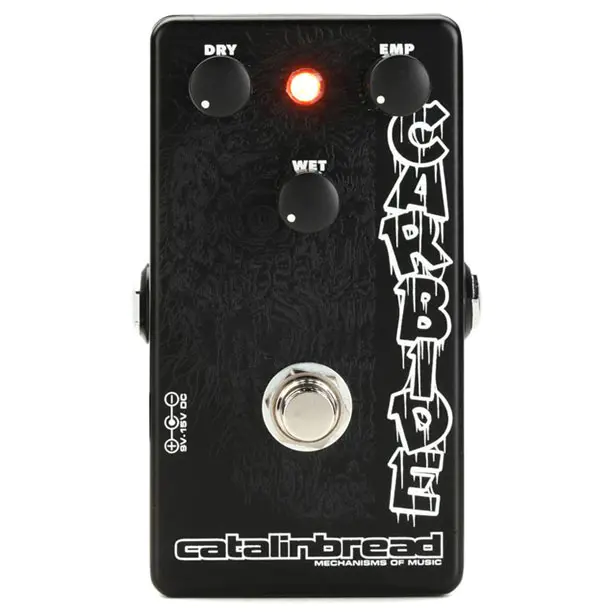
The Catalinbread Carbide is the Portland company’s take on the “Chainsaw-style Distortion,” an effect used and abused by some metal bands who downtune their guitars to add a sense of dread to their tone.
Unlike other pedals going for this sound, the Carbide keeps things simple, at least on the surface, with three knobs (Dry, Wet , and Emphasys).
However, things are a little more complex on the circuit level, where the signal is split in two:
- The Dry path routes the signal to a clean boost optimized for downtuned instruments
- The Wet path sends your tone through the distortion circuits, which emulates the sound of a BOSS HM-2 with all four knobs at 10, tweaked and perfected by the Catalinbread crew for extra crunch and thud.
The Emphasis knob, placed after the two channels get mixed, lets you tighten up the extreme low end while taming the high end for a more focused sound.
Have a listen to the results in the videos below.
Catalinbread Carbide Distortion, Builder’s Notes
The Carbide is a pulverizing distortion pedal that captures the mighty “chainsaw sound,” typically associated with a cranked HM-2, and much more.
If you’ve been a fan of music with guitars tuned lower than standard in the last 30 years, there’s a chance you’ve heard of this hot new sound, usually associated with heavy riffs and power tools. In lay terms, the Carbide is a pulverizing distortion with heady boosts to certain frequency bands—three of them, to be exact—and a ton of volume.
Officially, obtaining this “chainsaw sound,” as it came to be known, consists of plugging into a Boss HM-2 Heavy Metal and maxing all four knobs. Our Carbide starts with this at its base, then tweaks the majority of the distortion circuit for maximum crunch and thud. Instead of giving you a paltry blend control, the Carbide splits your signal into two paths; one path heads to a powerful clean boost specially configured to downtuned instruments, the other heads into the gears of the distortion. Each path is given its own volume knob before being mixed in parallel, letting you fine-tune the right amount of dirt. An Emphasis control tightens up the extreme low end while cutting treble, letting the boosted frequency bands jump out of the mix. Let’s head in.






















